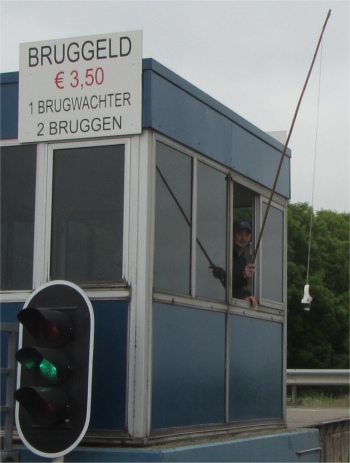 Bridge Keeper Collecting the Dues by Clog |
I concocted the most horrific breakfast this morning: fried tomatoes, cucumber, peach, semi-raw potatoes and eggs, a sort of omelette diablo. Rex and Meryl were terribly sweet and polite about it, the words "different" and "interesting" being mentioned. They both made trips to the toilets shortly after breakfast!
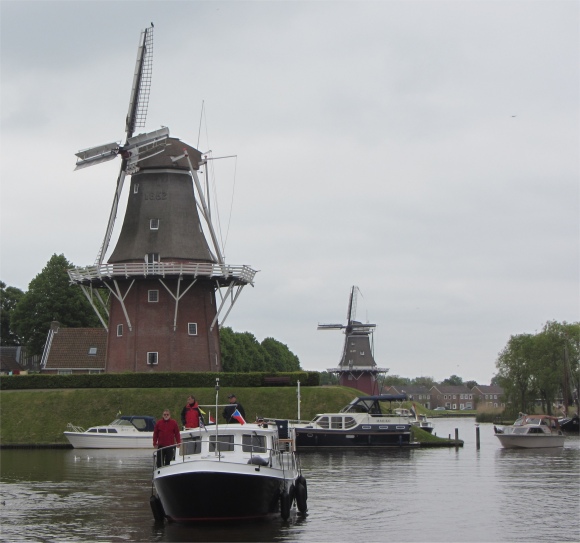 Restored Flour Mills, Zeldenrust in the Foreground, de Hoop Behind |
On the outskirts of Leeuwarden the cycle path alongside the canal was streaming with hundreds of students on their way to university. Just by the university, a very large cycle park stood by the cycle path, with hundreds of cycles stacked away. The academic complex was enormous and very modern.
We left the city behind us and passed through a very pastoral landscape, rich in the aroma of muck-spreading. Air force jets roared into the clouds above us from a nearby base, shattering the chorus from hundreds of song birds. This was a land of polder mills, old derelict structures and a few working mills liberally peppering the polders. Their functionality has largely been taken over by electrical pumps.
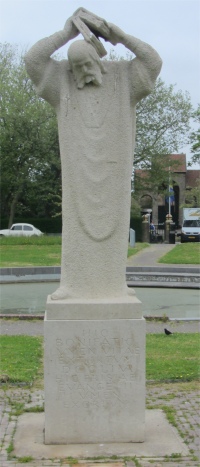 Boniface Statue |
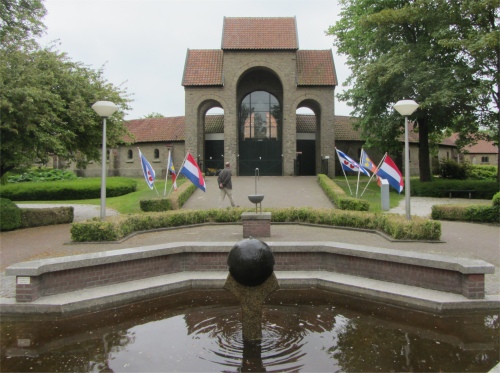 Boniface Chapel |
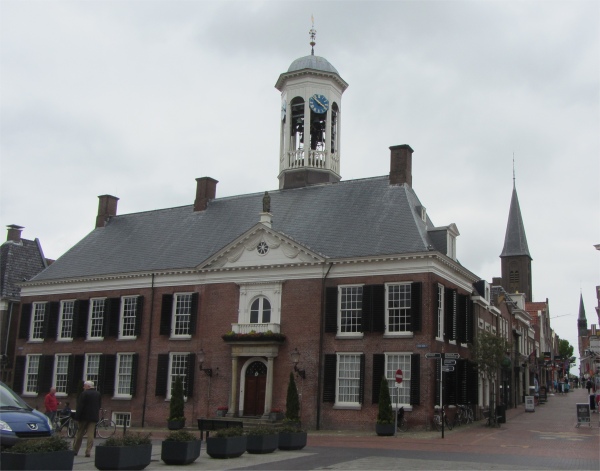 Stadhuis |
There was no obvious sign of facilities, so I ambled along the bank and got chatting to a Dutch chap who by chance owned the same class of boat as Rex. He hailed from Den Helder, and had owned his vessel for 12 years. Its previous owners were German, who had kept it in the Mediterranean. The chap was kind and took me along the pontoon to show me where some public toilets were, and he asked the bridge operator where the showers were. They were off the beaten track, so no shower tonight. The fellow and his wife were just heading out to Lauwersmeer, and then on to the islands. He made the interesting comment that it takes roughly a day of sailing between each island in the Waddenzee. He also made some interesting comments about the Dutch and their holding tanks (holding brown waste), but I couldn't possibly repeat them here.
We set about exploring the city, one of the historical Eleven Cities, and like Leeuwarden, had a diamond shaped canal structure surrounding the town, keeping its shape as a fortified town. Oliver of Cologne preached the Fifth Crusade in Dokkum in 1214 and Dokkum sent a contingent; the crescent in the coat of arms of Dokkum refers to this event. Dokkum acquired city rights in 1298. In 1572 Dokkum was sacked by the Spaniards after it had joined the Dutch Revolt. In 1597, the Admiralty of Friesland was established in Dokkum. However, it was moved to Harlingen in 1645.
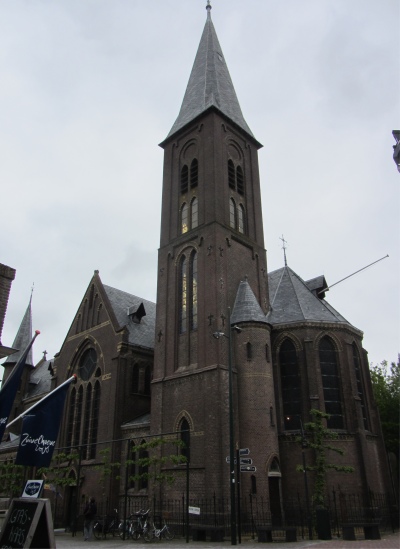 St Martinuskerk |
Boniface, or Winfrid, to give him his baptismal name, was born into a Christian family of noble rank, probably at Crediton in Devon, UK, about the year 680. Winfrid was a very small boy when he found himself listening to the conversation of some monks who were visiting his home. He resolved then to enter the Church, and this resolution never weakened. He became a teacher, and at the age of thirty he was ordained priest, and now added preaching to teaching and administrative work. His first attempt at being a missionary had shown him that to be effective as a missionary he must have a direct commission from the Pope, so in 718, with commendatory letters from the bishop of Winchester, he presented himself in Rome before Gregory II. The Pope welcomed him warmly, kept him in Rome until spring of the following year, when traveling conditions were favourable, and then sent him forth with a general commission to preach the word of God to the heathen. At this time Winfrid's name was changed to Boniface, from the Latin, bonifatus, fortunate). Pope Gregory III sent Boniface the pallium in 731, appointing him archbishop and metropolitan of all Germany beyond the Rhine, with authority to found new bishoprics.
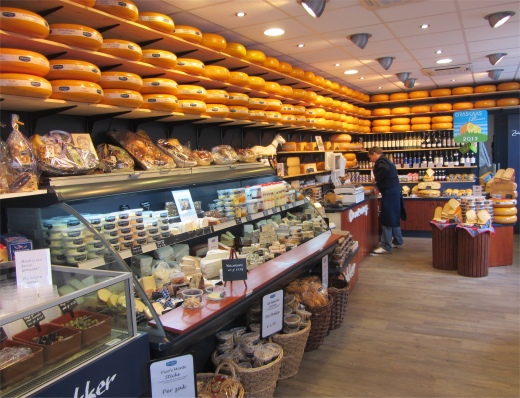 Cheese Shop |
 Classic Dutch Scene on the Klein Diep |
In the chapel, a kind lady put a film on for us, in English, that described the life of Boniface. The chapel contained a large auditorium, the meeting point for pilgrimages. It felt kind of strange to be in a place where a son of England, who became the patron saint of Germany, died here in Friesland.
Collecting provisions on the way, we headed back into town, picking up some apple tarts on the way. Hmmm... perhaps we were getting addicted to these delicacies. The Stadhuis (1608) featured a handsome Rococo chamber. A chap was nestled up in the carillon, tuning the bells as we walked past.
As we strolled further up into the town up a slight incline, it was easy to see why the town was built here, a natural mound or terp existed to stand it on. By an amazing cheese shop, we came across the 15th century Grote Kerk or St Martinuskerk, which contained a fine pulpit of 1751 and organ-case of 1688. The large cobbled square behind it was deserted, guess it wasn't market day, but there was a cafe open which we made full use of since there wasn't much else open. It was 5pm and the town was deserted.
On the restored town walls stood two flour mills, De Hoop ("Hope") and Zeldenrust ("Seldom at Rest"), cap mills that are preserved and both are open to the public by appointment. We sauntered along the town wall to Zeldenrust, We hadn't made an appointment, so no chance to look around the interior, but the restoration work was very professional.
We retired to Duonita where Meryl cooked a splendid chicken Provenšale - delicious.
